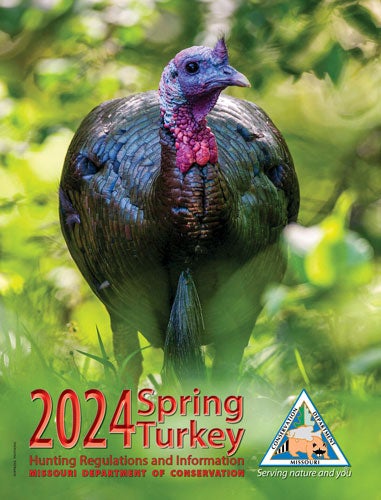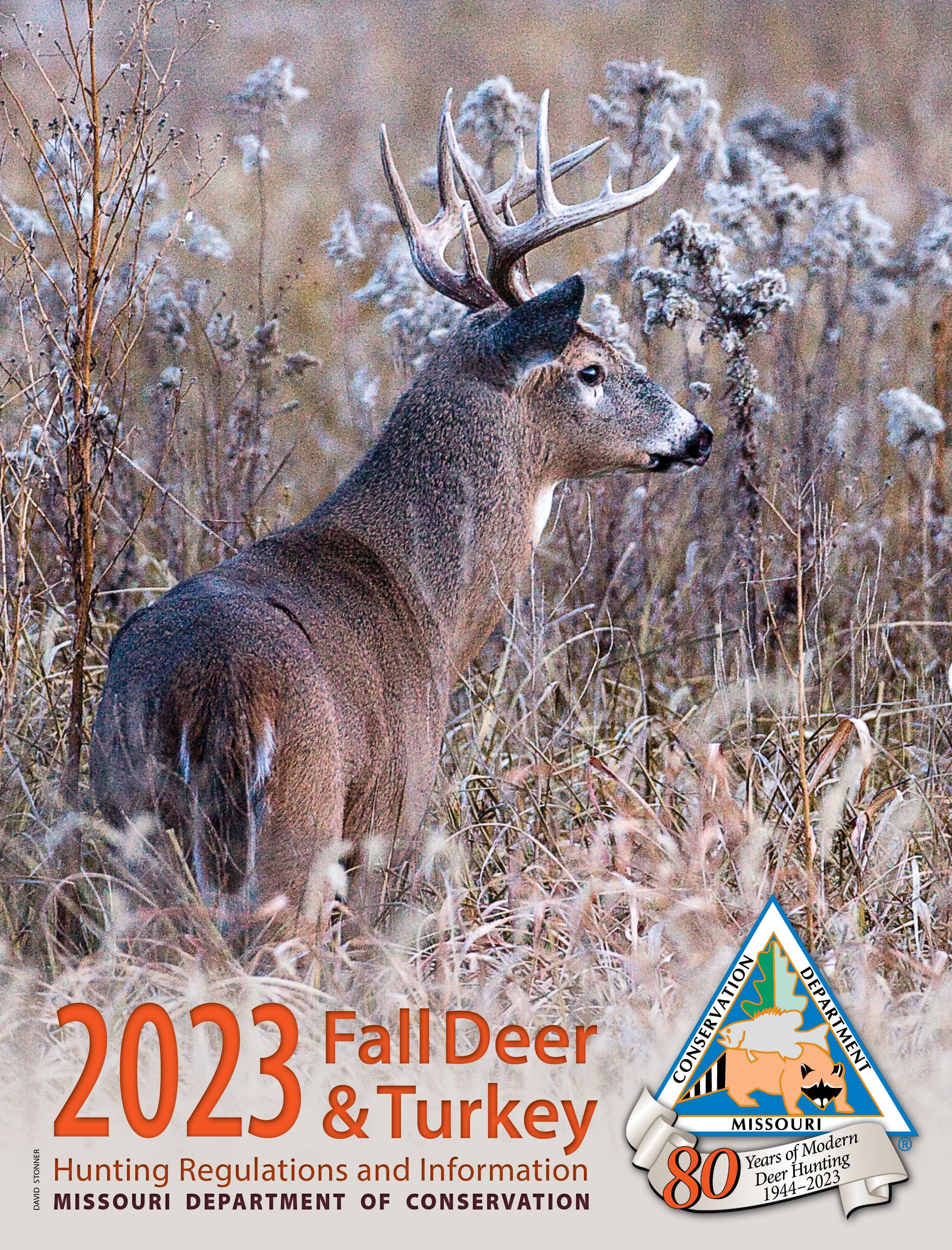Shotgun selection
12-gauge shotguns are the standard among turkey hunters. Smaller gauges, particularly 20 gauges, are a great choice for young hunters.
Shooting at a turkey at more than 40 yards is not recommended, regardless of which gauge shotgun is used.
Your choice of choke may make the difference between a clean kill and a crippled bird. The most popular is an extra-full choke, which gives the tightest pattern. A tight pattern is important in order to strike the vital head-and-neck area.
Many hunters now use shorter-barreled shotguns, which are lighter and easier to maneuver. The most common shot sizes are No. 4, 5, and 6. Pattern your gun with several sizes and select the load and shot size that pattern best. Missouri regulations prohibit the use of shot size larger than No. 4 for turkey hunting.
Bow hunting
Bow hunting for turkeys is challenging. Use a broadhead design that inhibits full penetration, which generates more impact and kills a turkey more quickly.
Turkey Calls
Another important piece of equipment is a turkey call. There are a variety of calls on the market but basically they fall into two categories–friction calls and air-operated calls.
Friction calls are probably the easiest to use. Two surfaces are rubbed together, creating friction that produces sound. Box and slate calls are examples of friction calls. Air-operated calls create sound when air is passed through or over the call. The three basic air-operated calls are the yelper, the tube call and the diaphragm call.
All of these calls require practice to become proficient. Your best bet is learning from an experienced caller and from the turkey. Audio and video tapes may also be helpful.
General equipment
Other equipment you may need for the hunt includes: a knife, compass, topographic maps, rope, first-aid kit, insect repellent, rain gear, camera and your turkey-hunting permit. Camouflage clothing, including hat, gloves, face paint or mask, can be helpful and are considered essential by some hunters. A blaze-orange hat or vest is recommended when moving in the woods, and another vest or orange sash is suggested for wrapping your turkey when carrying it out of the woods.
Proper equipment can make the difference between an enjoyable or miserable hunt. A good idea is to develop a checklist, especially if you are traveling a great distance to hunt. Be prepared for the unexpected.
Physical preparation
One other important consideration before the hunt is yourself. Missouri turkey hunting can be physically demanding. Prepare yourself for the long walks, steep hills and adverse weather conditions. Pre-hunt scouting will help you get into shape.























